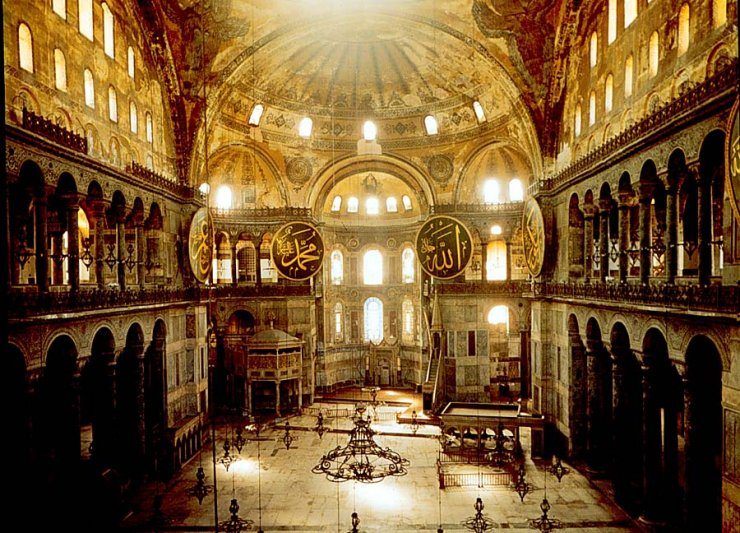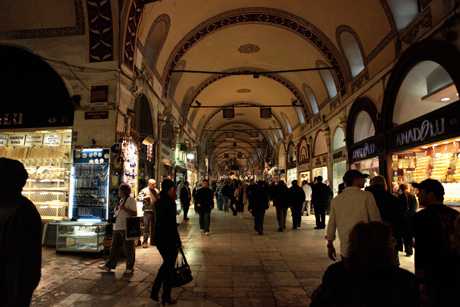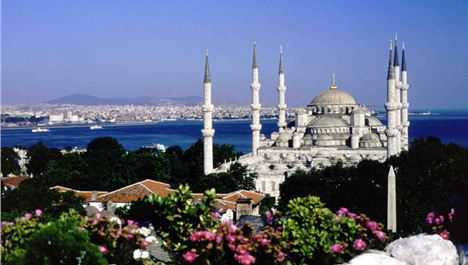Magnificent historical structures in the Turkish city speak volumes of its rich history, writes Rizauddin Ibrahim
AHH… historic Istanbul! This crosses my mind the moment I lay my eyes on classic Ottoman buildings and the architecturally European-flavoured ones set along the shores of the Golden Horn.
I am on a boat cruise along the waters of the Golden Horn, a natural estuary of the Bosphorus Strait that divides this capital of Turkey into two continents — Asia in the east and Europe in the west.
That boat cruise is a surreal yet amazing voyage between the two continents.
The Golden Horn is a 7.5km- long, narrow estuary that forms a protected natural harbour.
For thousands of years, it has been a port of call for ships from the Greek, Roman, Byzantine and Ottoman.
Here was where the city once began and here is where I begin my journey in historic Istanbul.
ANCIENT DOMES AND TOWERS
Looking at the city skyline from where I am on the boat, I can already feel the historic aura. First, I clearly see the domes and towers of Hagia Sophia, Topkapi Palace and Blue Mosque which date from the year 530 to 1600.
As the boat cruises along the coast, one cannot help feeling impressed at the sight of Dolmabahce Palace, (1856), and Beylerbeyi Palace, a summer palace completed in 1865.
And there are many hundreds of years-old wooden villas and mansions along the shores that will make anyone envious of their owners.
Then comes the Rumeli Hasari or Rumeli Fortress that will leave you awestruck by its sheer supreme look. It was the largest fortress built by Sultan Mehmed Istanbul II in 1451 to control the sea routes of the Bosphorus to prevent aid from the Black Sea reaching the Turkish Siege of Constantinople in 1453.
Constantinople is the Byzantine name for Istanbul. It was under siege many times before Mehmet The Conqueror took the city in 1453 and made it the capital of the Ottoman Empire. Before that, it was the capital of powerful Roman and Byzantine Empire.
These ancient empires left these symbols of their past glories and best of all, these remnants are not scattered ruins of dull grey stones but large buildings which have defied the ravages of time. All these can now still be seen in the Sultan Ahmed District.
ROYAL DISTRICT
The Sultan Ahmed District is the heart of historic Old Istanbul. It is located on the peninsula bounded by bodies of water to north, east and south — the Golden Horn, Bosphorus and the Sea of Marmara, respectively. The area was declared a World Heritage Site by Unesco in 1985.
This is where Constantinople was located at the southern bank of the Golden Horn and parts of the defence wall of the old city still remain at the coast. Located on the European side of Istanbul, the old city is the best base for sightseeing in Istanbul.
As the most historic part of Istanbul, Sultan Ahmet District is where all the city’s significant landmarks like Hippodrome, Blue Mosque, Hagia Sofia and Topkapi Palace are located. Making it a complete tourist destination, the area has a number of good restaurants and hotels too.
HIPPODROME OF CONSTANTINOPLE
Though public transport is easily accessible, going on foot is the best choice to explore the old city. You should not miss going to Sultan Ahmed Square, actually the Hippodrome of Constantinople, the sporting and social centre of the city during the Byzantium era where horse or chariot racings were held.
Today, several fragments of the original structure that adorned the square during its glorious time are still standing. They are the monuments of the Spiral Column, Thutmosis Obelisk and Walled Obelisk.
The most recent addition to the square is the German Fountain, which is an octagonal domed fountain in neo-Byzantine style, constructed by the German government in 1900 to mark the German Emperor Wilhelm II’s visit to Istanbul in 1898.
THE BLUE MOSQUE
Adjacent to the Hippodrome is the Blue Mosque, or its official name, Sultan Ahmed Mosque. Built from 1609 to 1617, it is called the Blue Mosque for the blue tiles that adorn the walls of its interior. However, the tiles are mostly on the upper level, which is difficult to see.
Coming from the Hippodrome, I walk through a grand doorway on the western side to go to its inner courtyard.
Its architecture is better appreciated from the outside, especially under the bright sunlight from the Sultan Ahmed Garden at the northern side.
This grand building of Ottoman architecture with six minarets and cascading layers of domes is a sight to behold.
HAGIA SOPHIA
As you admire the Blue Mosque and praise its architect, Sadefkar Mehmet Aga, tribute should also be given to Anthemius of Tralles and Isidorus of Miletus, the architects of neighbouring Hagia Sophia.
They designed Hagia Sophia 1,000 years before Mehmet Aga was born. History goes that Sultan Ahmed 1, the Sultan of Ottoman ordered the Blue Mosque to be built to rival Hagia Sophia. And the result is two great architectural achievements standing next to each other in Istanbul’s main square.
Hagia Sofia or Aya Sofia in Turkish which means Church Of Holy Wisdom, was built from year 532 to 537.
At that time, its wide, flat dome was considered a daring engineering feat and became the world’s most impressive building and made it the greatest church in Christendom.
It then was turned into a mosque when Ottoman conquered the city in 1453 and continued to serve as Istanbul’s most revered mosque until 1935 when Kamal Ataturk turned it into a museum as we see it today.
Unlike the Blue Mosque, Hagia Sofia is best admired from the inside, especially from the mezzanine level. From this floor, the view of the prayer hall is the most impressive. The natural light is slightly dimmed under its massive dome but gloriously lit by the glittering gold from the 30 million pieces of tiny golden tiles.
These tiny pieces of tiles are mosaic images of the Virgin Mother, Jesus, saints, emperors and empresses, as well as geometric patterns.
As it was once a mosque, the wall has Islamic calligraphy arts that inscribe religious names including that of the first four caliphs Abu Bakar, Umar, Uthman and Ali.
It is under this great dome of Hagia Sophia that I find a perfect mix of both Ottoman and Byzantium, or Islamic and Christian.
These are the characteristics of two different cultures from two great empires that have affected present Istanbul.
TOPKAPI PALACE
Next to Hagia Sophia is Topkapi Palace, home of Ottoman Sultan for 400 years and the heart of Ottoman Empire.
The initial construction began in 1459 but after that, over centuries, the Palace Complex expanded to cover 80 hectares! This centuries-long construction included the major renovation after the 1509 earthquake and 1665 fire.
At its peak, the palace is home to 4,000 people but it is now the Topkapi Palace Museum housing many collections of historic objects from all over the Ottoman Empire and precious heirlooms that once belonged to Ottoman Sultans themselves.
A short visit to this palace will not do justice to it for it is a huge complex, made of four main courtyards and many smaller buildings.
The assortment of small buildings is fine architecture on its own. They are a result of the directives by many previous Ottoman Sultans who individually added and changed various structures and elements in the palace.
But the finest of all is the Fourth Courtyard or Imperial Sofa, the innermost private sanctuary of the Sultan and his family and has a number of pavilions, kiosks, gardens and terraces.
Here also is the special chamber called Chamber of the Sacred Relic, which includes the Pavilion of the Holy Mantle.
The pavilion houses what are considered the most sacred relics of the Muslim world, including the cloak of the Prophet Muhammad, two swords, a bow, one tooth, hairs of his beard, his battle sabres, autographed letters and other relics.
Several other sacred objects are also on display, such as the swords of the first four Caliphs, the staff of Moses, the turban of Joseph and a carpet belonging to Muhammad’s daughter.
The upper terrace has the Iftar Kiosk and Baghdad Kiosk where the Sultan customarily breaks fast during Ramadan with the view of the Golden Horn in the background. This is the best place to end the tour in Topkapi Palace.
GRAND BAZAAR
For a city that is proud of its heritage and culture inherited from two major empires, there is life in this city that stubbornly clings on to its old world ambience. That is the Grand Bazaar.
The oldest and one of the world’s largest covered bazaars, the bazaar spreads over 61 covered streets with more than 3,000 shops. Record has it that the bazaar attracts between 250,000 and 400,000 visitors daily.
It offers an excellent shopping experience especially for souvenir hunting, from Turkish carpets, glazed tiles and pottery, copper and brassware, apparel made of leather, cotton and wool, music instrument to all sorts of other things.
Thanks to the ambience, I can’t help but feel like entering Aladdin’s cave in some shops selling antiques.
This is the place to hone bargaining skills, which usually involves prospective clients having tea with the traders while bargaining for the right price.
Shopping in the Grand Bazaar is what many visitors list as among the things to do when visiting Istanbul. But for a more sizzling time, have a fine dinner with a belly dancing show thrown in.
Read more: Under the spell of Istanbul – Holiday – New Straits Times





